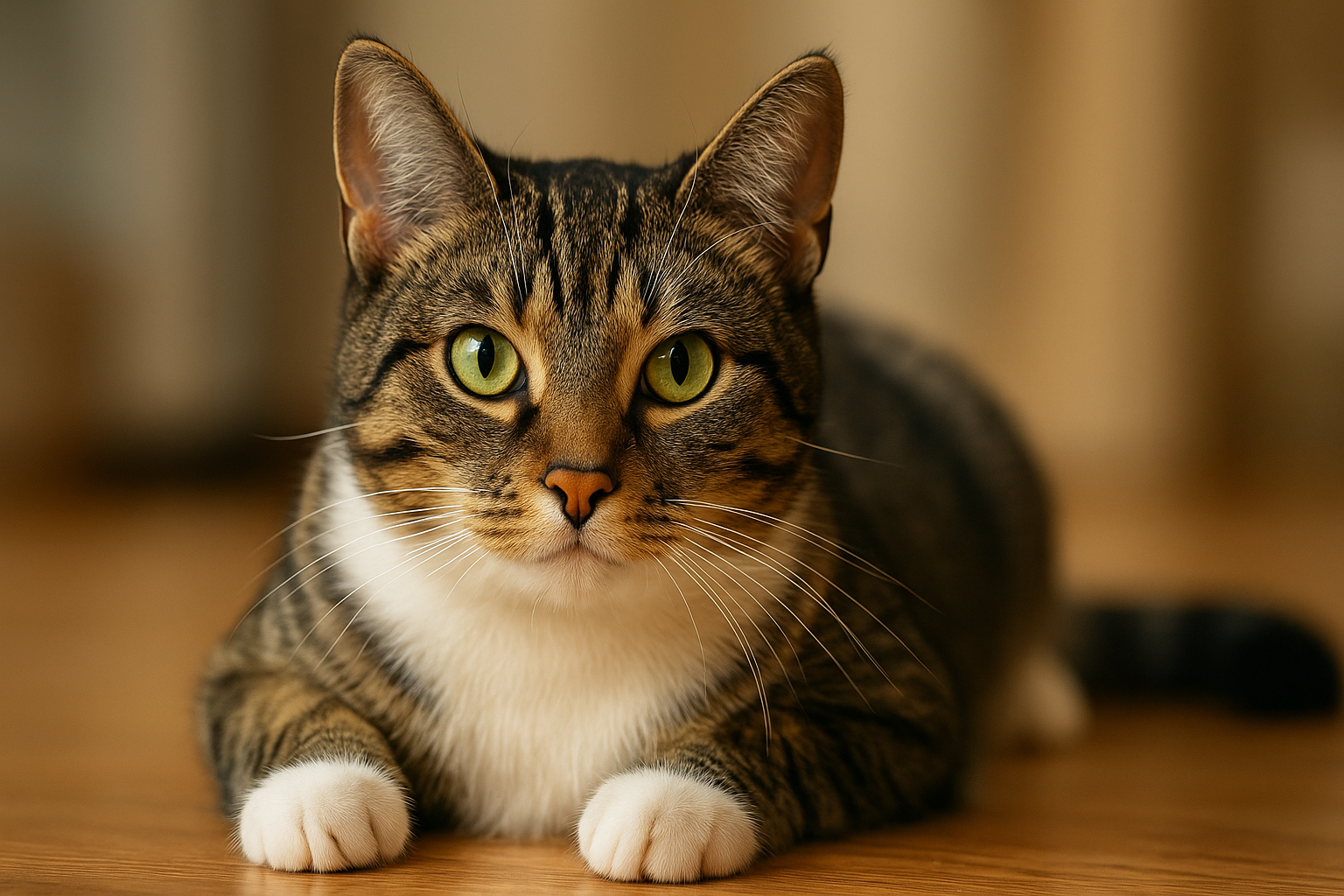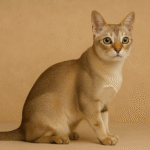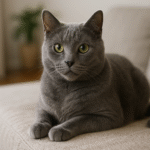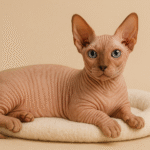The Domestic Shorthair Cat isn’t a recognized breed — it’s a term used for short-haired cats of mixed ancestry. But don’t let that fool you. Domestic Shorthairs are some of the most popular and beloved cats in the world. You’ll find them everywhere — lounging on windowsills, ruling living rooms, or curled up in shelters waiting for their forever homes. If you’ve ever brought home a cat without pedigree papers, chances are you’ve met a Domestic Shorthair.
Thanks to their wide mix of personalities and colors, they’re often called the “mutts” of the cat world — and we mean that in the best possible way. They’re low-maintenance, endlessly unique, and have been living alongside humans for thousands of years.
Quick Breed Facts
- Origin: Worldwide (non-pedigreed domestic cats)
- Breed registries: Not recognized as a breed
- Weight range: 6–16 pounds (2.7–7.2 kg)
- Lifespan: 12–16 years (sometimes longer)
- Coat: Short, dense, low-maintenance
- Colors and patterns: All colors and patterns
- Eye color: Wide range – gold, green, hazel, blue
- Grooming: Weekly brushing recommended
- Activity level: Moderate to high
- Affection level: Varies by individual, often friendly
- Vocality: Medium
- Good with children: Often, yes
- Good with other pets: Generally yes if socialized
History & Origin
Domestic Shorthair cats have been around for a long time — even though they’re not a formal breed. These cats are the result of generations of short-haired felines living alongside humans, helping keep homes, barns, and grain stores free of mice and other pests.
As people traveled the world by ship, cats tagged along as natural pest control. Over the centuries, the toughest, most adaptable cats thrived. Today, their descendants make up what we now call the Domestic Shorthair — a true survivor and everyday companion.
Personality & Temperament
Because Domestic Shorthairs come from mixed backgrounds, their personalities can vary — but many share a few common traits. They’re known for being independent but affectionate, often bonding closely with their humans while still enjoying solo exploration time.
Some are playful and outgoing, others are chill lap cats, and many are a bit of both. Their adaptability makes them excellent choices for busy families, single people, or seniors looking for a low-fuss companion.
Appearance & Coat
One of the most striking things about Domestic Shorthairs is how different they all look. These cats come in every color and pattern imaginable — tabby, calico, tuxedo, solid, bicolor, tortoiseshell, and more. Some have bold stripes, others have soft spots or swirls, and no two are quite the same.
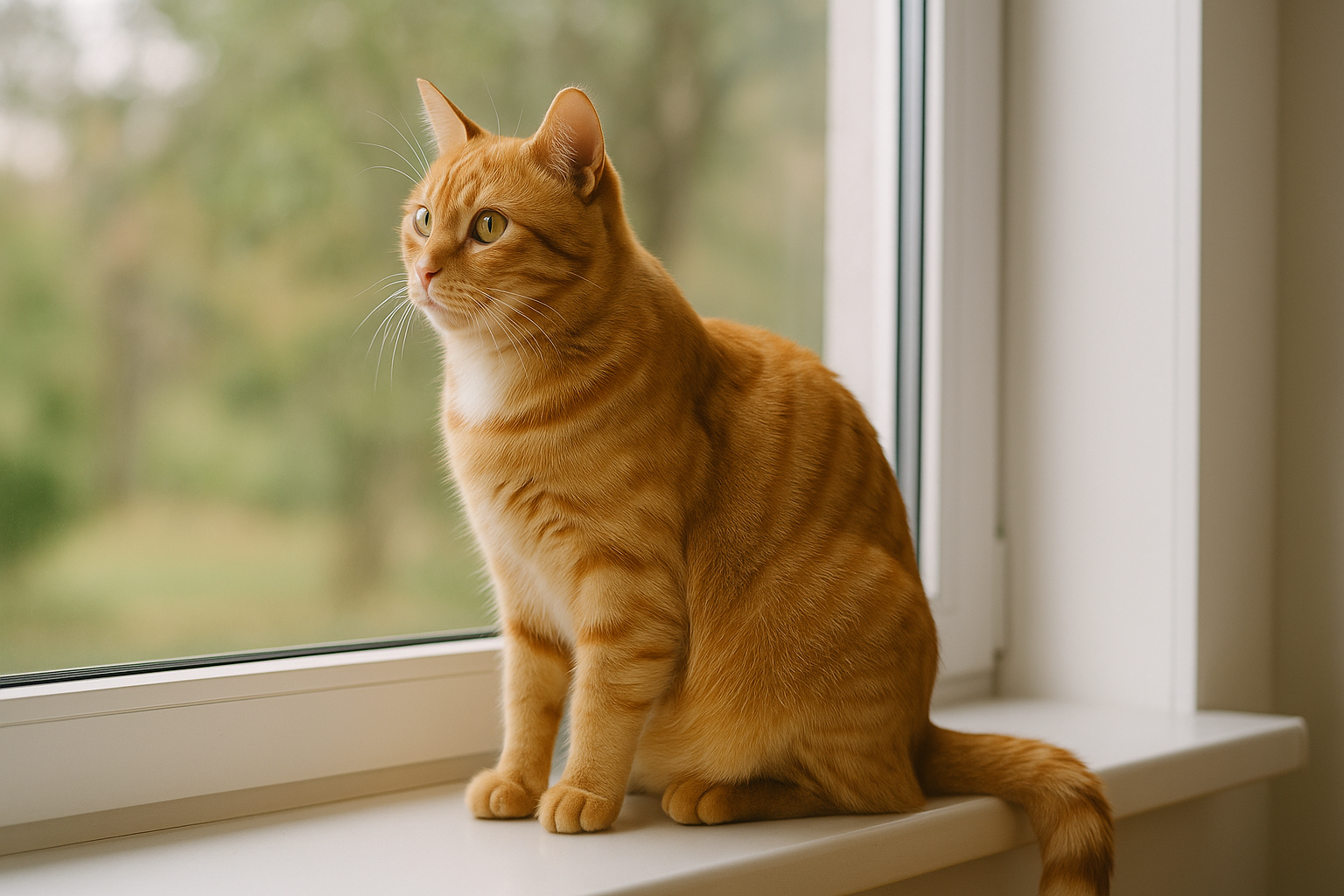
Most have a muscular, athletic build and a short, low-maintenance coat that doesn’t require much grooming. Their eye colors range from green and gold to amber and blue — some even have two different-colored eyes. It’s part of what makes them so unique.
Activity & Play
Domestic Shorthairs are naturally curious and full of energy. You might find them darting down the hallway during a late-night zoomie session or stalking a feather wand with laser focus. While they aren’t as hyper as some breeds, they do love their playtime — especially if they spend most of their time indoors.
These cats thrive on enrichment. Toys, puzzle feeders, and window perches can keep them mentally and physically engaged. Some Domestic Shorthairs even enjoy learning tricks or exploring new spaces, so rotating their environment can help prevent boredom — and maybe save your houseplants.
Grooming & Care
These cats are wonderfully low-maintenance. Thanks to their short, dense coat, Domestic Shorthairs usually just need a quick weekly brushing to reduce shedding and hairballs. Most groom themselves efficiently, but elderly or overweight cats may need a little extra help.
Routine nail trimming, dental care, and occasional ear cleaning round out their basic grooming needs. A cat-safe shampoo can be useful if they get into something sticky or stinky — just don’t overdo the baths.
Health & Lifespan
Domestic Shorthair cats are generally considered a healthy and hardy group. Because they come from a wide gene pool, they often have fewer inherited conditions than some purebred cats. That said, they’re still at risk for common feline issues like dental disease, obesity, or diabetes — especially as they age.
With good nutrition and regular veterinary care, most Domestic Shorthairs live 12 to 16 years, with some reaching their late teens or even early twenties.
Family Compatibility
One of the Domestic Shorthair’s greatest strengths is its flexibility. These cats can fit into just about any household — from bustling families with kids and dogs to quiet apartments with just one or two people. Their easygoing nature and range of personalities make it easy to find the right match at a local shelter.
Many Domestic Shorthairs are also known for forming close bonds with their humans and can be incredibly loyal once they settle into their forever home.
Recommended Supplies
Your Domestic Shorthair doesn’t need anything fancy, but a few smart purchases can really improve their day-to-day life. A sturdy scratching post, cozy bed, and clean food and water bowls are great basics. Add a quality diet and a few toys, and you’re off to a strong start.
That said, these curious cats do love a bit of variety. Rotate their toys every few weeks, give them access to different perches or hideouts, and consider adding puzzle feeders to keep their minds engaged. A little enrichment makes a big difference — especially if they’re indoor-only.
Domestic Shorthair Cat FAQs
Is a Domestic Shorthair a breed?
Nope — it’s a term used to describe short-haired cats of mixed ancestry. They’re not a recognized breed like the American Shorthair.
How long do Domestic Shorthair cats live?
With proper care, many live between 12 and 16 years, and some even longer.
Are Domestic Shorthair cats hypoallergenic?
Not really. They aren’t the worst for allergy sufferers, but they still produce dander and saliva proteins that can trigger reactions.
Do Domestic Shorthairs shed?
Yes — but less than long-haired breeds. Weekly brushing helps reduce shedding and hairballs.
How much does a Domestic Shorthair cat cost?
Adoption fees range from $50 to $200. Many are available at local shelters, often already spayed/neutered and vaccinated.
Is the Domestic Shorthair Cat Right for You?
Domestic Shorthairs may not turn heads with exotic features, but they more than make up for it with personality and heart. They’re playful, adaptable, and easy to care for — a perfect match for first-time cat parents or experienced cat lovers alike.
From cuddly companions to spirited mousers, there’s a Domestic Shorthair for just about every household. With so many waiting in shelters across the country, finding your perfect match might be closer than you think.

